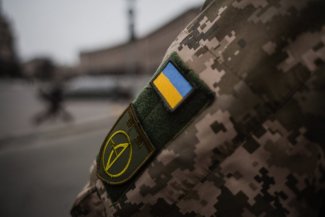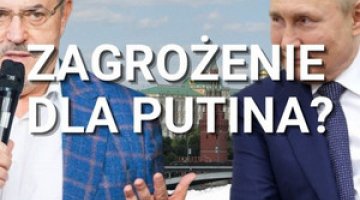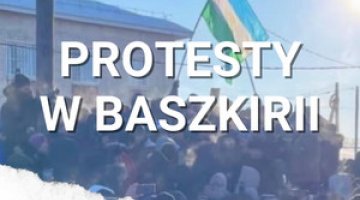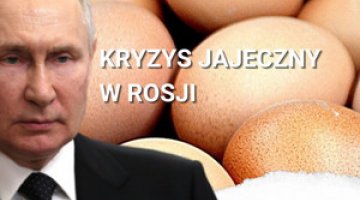A creeping annexation. Russia’s plans to partition Ukraine

Russia was forced to modify its plan after its military operation in Ukraine failed. The original intention was the rapid political subjugation of Ukraine. The new plan involves Russia consolidating its position in the territories that it has managed to seize thus far. As a result of major resistance on the part of Ukrainian society, the Kremlin has abandoned its planned implementation of a technique known from 2014 involving the creation of so-called people’s republics in the occupied Kherson Oblast and portions of Zaporizhzhia Oblast. Since May 2022, Russian government officials have increasingly frequently spoken of annexing the occupied territories, making reference to the history of the Russian Empire and to the Taurida and Kherson governorates created in 1802. As concerns the so-called Donetsk and Luhansk People’s Republics (DPR and LPR), the plan to incorporate them into the Russian Federation should be viewed as a correction of the strategy pursued following the signing of the so-called Minsk agreements in 2015, which specified that the Donbas would be granted special status within the Ukrainian state. The self-proclaimed republics and the territories that have been seized since the beginning of the war, covering more than 80,000 square kilometres, are to become an integral part of Russia. This will enable Moscow to maintain a corridor leading to occupied Crimea, to present the “special military operation” as a Russian victory and to launch another stage of the process of “uniting Russian lands”.
A change of plans
By recognising the independence of the so-called people’s republics on 21 February 2022 and launching the invasion three days later, the Kremlin has ultimately abandoned a “peaceful” scenario for Ukraine’s subjugation.[1] As a consequence, announcing Ukraine’s “demilitarisation” and “denazification”, i.e. the need to disarm the country, to halt its military cooperation with the West and to ban the operation of “political parties and organisations of a nationalist nature”, was intended to result in the government in Kyiv capitulating in exchange for the cessation of military activity.[2]
At present, Russia’s goal is to maintain control of the occupied southern and eastern territories of Ukraine, to ensure a land connection between Crimea and Russia, and to cut Ukraine off from the Black Sea and the Sea of Azov. The primacy of the military strategic approach is clear – Russia wants the seized territories to remain heavily militarised and to enable the continued presence of its forces there to permanently destabilise Ukraine. Russia has conquered 95% of Kherson Oblast, 70% of Zaporizhzhia Oblast and around 10–15% of Kharkiv and Mykolaiv Oblasts, as well as 95% of Luhansk Oblast and 50% of Donetsk Oblast (including the so-called DPR and LPR).
On 26 May 2022, Kremlin spokesman Dmitry Peskov for the first time officially confirmed Russia’s intention to annex Ukrainian territories seized since the invasion on 24 February. Moscow expects Kyiv to accept its claims to these territories and to abandon any attempts to recapture them. Peskov considered this a non-negotiable issue and called on the Ukrainian government to recognise the de facto situation in the occupied territories. It was repeatedly stressed that residents of all Ukrainian territories that are now controlled by Russian forces – and not just the Donbas – allegedly have the right to decide for themselves whether they wish to be incorporated into Russia. The Kremlin intends to legitimise the planned annexation of Ukraine’s eastern and southern regions by holding pseudo-referendums, although it cannot be ruled out that this stage will be skipped and these territories will be incorporated into Russia following an “appeal” by pro-Russian “collaborationist authorities”. Implementation of this scenario will be presented as a success for Russia which is capable of expanding its territory and continuing its efforts to weaken its adversary.
The occupation of the Donbas
Russia’s military was prevented from reaching the administrative borders of Donetsk and Luhansk Oblasts and annexing their territories to the so-called DPR and LPR due to resistance from the Ukrainian armed forces. The fact that the planned seizure of the Donbas as a whole is taking longer than expected has forced the Russian government to once again postpone the date of the pseudo-referendums on the region’s annexation to Russia. Initially they were planned for mid-May, only to be postponed until mid-summer, and now the referendum is to be held “within a year”. It has also triggered the need to set up temporary administration structures in localities from which enemy forces have been pushed out. Ukrainian local authorities there are faced with the choice of yielding to the occupiers or to be arrested and interned in the territory of the Russian Federation. If they refuse to cooperate, the Donetsk and Luhansk separatists appoint new representatives of the so-called local self-governments from among collaborators who are frequently disgraced individuals lacking authority in their specific communities. For example, in Mariupol, a former city councillor from the pro-Russian party Opposition Platform – For Life was appointed as the new “mayor”.
Alongside this, active administrative efforts are being made to accelerate the integration of the so-called DPR and LPR and their newly annexed territories into Russia. Implementation of this task has been entrusted to Sergey Kiriyenko, First Deputy Chief of Staff of the Presidential Administration of the Russian Federation, who is believed to have taken over this role from another Deputy Chief of Staff of the PA, Dmitry Kozak, until recently the informal so-called curator of the Donbas. In this way, competences related to the management of the occupied areas of Ukraine were transferred from the Presidential Directorate for Cross-Border Cooperation and the Presidential Directorate for Interregional Relations and Cultural Contacts with Foreign Countries to the Presidential Domestic Policy Directorate run by Kiriyenko. This equates to the elimination of the formal independence of the para-states. This trend is corroborated by personnel changes in both pseudo-republics: senior “government” posts, until recently held by representatives of local elites, are being taken over by Russians with experience in regional administration at home.
Efforts to gain administrative control of the occupied territories include the ruthless treatment of the local population who hold pro-Ukrainian views. Special military units search houses in the seized villages and look for activists and Donbas war veterans. These individuals are detained on suspicion of involvement in alleged war crimes. In addition, under the pretext of carrying out an evacuation operation, Russians are deporting large numbers of the region’s residents recognised as individuals with a hostile attitude to the occupation (see below). Others are being forced to assume Russian citizenship as soon as possible, which enables them to receive welfare benefits. This opportunity was introduced on the basis of a decree signed by Vladimir Putin in early May 2022 on further facilitation of the procedure for granting Russian citizenship to residents of the Donetsk and Luhansk Oblasts, which lifted the requirement for them to hold passports of the so-called People’s Republics (before the invasion 860,000 individuals from the so-called DPR and LPR had been issued Russian passports). Alongside this, Ukrainian names and signs are being removed from the public space, and replaced with Russian ones.
Major emphasis was placed on the indoctrination of young people, which is being carried out through a plan to implement a new school curriculum. Teachers were given the choice to either abandon the Ukrainian curriculum altogether and implement its Russian equivalent or to be forced to abandon their jobs and leave their place of residence. In schools located in the territories annexed to the so-called DPR, the school year has been extended until 1 July so that the pupils can go through the imposed curriculum without having to repeat a year. It was also announced that young people from the two para-states would have easier access to Russian universities. In order to improve the “quality“ of education, selected Russian universities will take over supervision of the universities located in the occupied territories of the Donbas.
Russian propaganda has attached importance to declarations regarding the reconstruction of the occupied territories once the conflict ends and they are annexed to Russia. According to estimates by representatives of the Russian Duma’s budget committee, this could cost around 1.5 trillion roubles (around US$24 billion) over three years. It is expected that the funds will be provided by the state budget and by private investors. At the end of May 2022, Russia’s Deputy Prime Minister Marat Khusnullin announced that the government had set up a special task force to devise a comprehensive plan for the reconstruction of the “liberated Ukrainian territories”, including a cost estimate of the reconstruction effort. So far, the only real action in this respect involved sending 70 machines (trucks, concrete mixers, bulldozers etc.) and 350 specialists to the so-called LPR to take part in this process.
According to President Putin’s decision, Russian regions are to become involved in the reconstruction of the occupied south-eastern regions of Ukraine and of the industrial facilities located there. Moscow will become the “curator” of the reconstruction of the infrastructure of Luhansk and Donetsk, Saint Petersburg will play this role for Mariupol, Bryansk Oblast will do so for Brianka in Luhansk Oblast, Kursk Oblast for Pervomaisk, and Leningrad Oblast for Yenakiieve. Specific parliamentary deputies representing these regions are to be involved in the process – they will launch efforts to harmonise the legislation of the Donbas with the legislation valid in the rest of Russia. Creation of a special economic zone there is also being considered to attract investments to industrial facilities destroyed as a result of military activities. The purpose of entrusting specific politicians and regions with providing assistance and support is to instil in Russian society, as much as possible, the conviction that there is a nationwide effort and involvement of the entire state (its structures and activists) in the reconstruction of the territories seized from Ukraine. The myth of a joint effort is intended to win Russians over to the idea of annexation and to the need to bear the economic and political costs associated with it.
The occupation of southern Ukraine
Having seized Kherson Oblast and a portion of Zaporizhzhia Oblast, the invaders faced the challenge of maintaining control of the occupied areas. Despite repeated displays of force and the use of violence, anti-Russian sentiment persists there and the scale of voluntary collaboration is relatively low (according to data compiled by the SBU, around 5,000 active collaborators have been identified in Ukraine). Basing their efforts on disgraced activists of the pro-Russian party Opposition Platform – For Life is not proving conducive to convincing the largely hostile society to accept the “new authorities”. Russia’s forces have no confidence in the organisational capacity of the collaborationist authorities which could not have emerged without their support, and are therefore maintaining their military administration structures. This means that Russian military personnel and members of special services are playing an important part in governance activities. The occupation is hampered by the activity of sabotage groups that destroy military infrastructure and facilities seized by the collaborators. Although acts of sabotage are infrequent, the invaders should expect that the threat they pose will rise. The Russians plan to increase the presence of their military units, as shown by their decision to occupy facilities previously used by the Ukrainian army. The occupied territories will be treated as a supply base for the front. According to Ukrainian intelligence, Russian forces are building a third line of defence there in preparation for prolonged fighting.
The actions carried out by the occupying forces to date indicate that annexation is being preceded by attempts to implement a rapid Russification of the seized areas. This is to be modelled on mechanisms that have been used in the Donbas for many years already. These include: creating a “rouble zone” and withdrawing the hryvnia from circulation, imposing Moscow time, seizing the information space through the introduction of telecommunication services provided by Russian operators (replacement of Ukraine’s dialling code with Russia’s dialling code, +7) and Russian-based media outlets, severing economic ties with Ukraine, including local business in the Russian economic zone and using roubles to pay welfare benefits. However, the scale of this “assistance” is insignificant. At the end of May 2022, the Ministry of Emergency Situations of the Russian Federation reported that benefits of 10,000 roubles had been paid out to a mere around 25,000 individuals. In an attempt to win the local population over, Russians are offering tax relief for businesses and individuals. However, to be able to use this relief, local residents need to sign a loyalty declaration.
Russia is looting the seized territories. Grain is being exported to Crimea and Russia. According to Ukrainian estimates, by mid-May 2022, around 400,000–500,000 tonnes of grain worth around US$100 million had been confiscated and sold to foreign buyers (including Turkey) as Russian-grown grain. Russia attaches great importance to a rapid “de-Ukrainisation”. A school curriculum developed in Moscow has been implemented in local education institutions. In addition, local residents are being forced to speak Russian. The popularisation of Russia’s historical policy is an important tool in the Russification campaign. This involves stressing the fact that the currently occupied territories used to belong to the Russian Empire (the Kherson and Taurida governorates), promoting an anti-fascist viewpoint on the 1941–1945 Great Patriotic War and emphasising the “fascist” nature of the government in Kyiv. Another step involves speeding up the passportisation process and the procedure for granting Russian citizenship. On 25 May 2022, Putin signed a decree to simplify this procedure for Ukrainians from Zaporizhzhia and Kherson Oblasts. The document stipulates that citizenship applications submitted by residents of these regions should take no longer than three months to process.
Security needs to be ensured in the occupied areas before they are annexed. Russian special services, assisted by National Guard units, are continuing their operation to identify individuals holding anti-Russian views. This includes filtering operations frequently involving brutal interrogations during which people are coerced into taking oaths of loyalty. Those who refuse to cooperate are deprived of access to financial resources and prevented from taking up employment. In some instances, these acts bear the hallmarks of penal operations.
Deportations of Ukrainians
In the occupied territories, deportations of the local population to Russia are being organised under the guise of a humanitarian action. In filtration camps in Rostov Oblast, Ukrainians are subjected to psychological pressure and coerced into accepting the “new order”. From these camps, the deportees are sent to 9,500 points of temporary residence located in 48 regions (the main resettlement destinations include inland regions such as Buryatia, Sakha and also Zabaykalsky Krai, Primorsky Krai, Khabarovsk Krai etc.). According to unofficial information, a deportee can only be issued a permit to return home when they have signed a declaration stating that they intend to comply with the rules which Russia has introduced there.
According to estimates prepared by Deputy Prime Minister of Ukraine and Minister of the Reintegration of Temporarily Occupied Territories Iryna Vereshchuk, around 1.2 million individuals have been deported from the seized territories since the start of the invasion, including more than 200,000 children. According to Russian statistics, since 24 February 2022 more than 1.55 million individuals “arrived” in Russia from Ukraine, including from the Donbas.[3] Russian migration services are said to have compiled a database of individuals allegedly interested in leaving Ukraine for Russia. It reportedly contains data on 2.75 million residents from 2,136 Ukrainian villages, towns and cities.[4] Forced deportations are mainly intended to identify individuals with pro-Ukrainian views. Dispersing them across Russian territory is expected to facilitate control of them and to enable so-called brainwashing. Resettlements, in particular from the Donbas, are intended to increase Russia’s workforce potential and to improve its demographic indicators.
The invaders use particularly brutal methods when dealing with minors from orphanages or those who are temporarily deprived of their parents’ care (e.g. patients in hospitals, sanatoriums and care centres). According to data compiled by the Ukrainian MFA, more than 2,500 children have been deported from the occupied parts of Donetsk and Luhansk Oblasts to Russia. President Putin signing a decree on 30 May 2022 on the facilitation of the procedure to grant Russian citizenship to Ukrainian orphans serves as proof that these activities are deliberate and coordinated. The decree made it possible to significantly accelerate the process of potential Russian caregivers adopting Ukrainian children. From Moscow’s point of view, deportations of adults and children are intended to facilitate their “de-Ukrainisation” and Russification and to strip them of their identity and their sense of attachment to their birthplace. The ruthlessness of these actions is also meant to influence the morale of Ukrainian society – to convince Ukrainians that the currently implemented changes are inevitable and irreversible.
Outlook
By choosing to implement the scenario of a creeping annexation of Ukraine, the Kremlin decided that its most important goal involves maintaining control of the strategically important connection between occupied Crimea and Russia. In the political aspect, the annexation of Ukrainian lands will enable Russia to sustain a narrative which emphasises the “victorious special operation” under which Russia took care of the pro-Russian population “oppressed” by the government in Kyiv. In addition, a gradual partitioning of Ukraine is being presented as a continuation of the historical mission involving the unification of “Russian lands” and Russia’s patronage over the triune Russian nation, which includes Ukrainians and Belarusians.[5]
The seized territories are of great military importance and will serve as a base for Russian forces to continue their military operations against Ukraine, and as a bridgehead for special services carrying out destabilisation operations. As a consequence, they will be transformed into a heavily militarised security buffer, which will make it increasingly difficult for Kyiv to recapture them. In the economic aspect, they will be used as a centrally managed food and industrial base (e.g. the nuclear power plant in Enerhodar) generating profits for Russian companies.
It is likely that the Kremlin’s decision to annex these lands will be delayed by the potential need to defend the occupied areas against attempts by Ukrainian forces to recapture them. While this scenario largely depends on the scale of Western weapons supplies, the illegal incorporation of these areas into Russia will limit the prospects for regaining them through peace negotiations because the Kremlin will consider them as a de iure part of Russia’s territory.
[1] For more see: K. Nieczypor, ‘Ciała obce. Samozwańcze republiki na wschodzie Ukrainy’, Komentarze OSW, no. 312, 27 November 2019, osw.waw.pl.
[2] M. Menkiszak, ‘Moscow’s long war: Russia’s political calculations after 100 days of conflict’, OSW Commentary, no. 452, 4 June 2022, osw.waw.pl.
[3] ‘В Россию прибыли 1,55 млн беженцев с Украины и из Донбасса’, Рамблер, 30 May 2022, news.rambler.ru.
[4] ‘В Россию из Украины, ДНР и ЛНР за сутки эвакуировали свыше 13 тысяч человек’, Интерфакс, 23 May 2022, interfax.ru.
[5] In his speeches, Putin makes repeated references to Peter the Great’s victories over Sweden and to his (Peter’s) achievements in regaining lands that used to belong to Russia. See ‘Путин сравнил себя с Петром I и назвал своей задачей возвращение территорий’, BBC News, 9 June 2022, bbc.com/russian.




